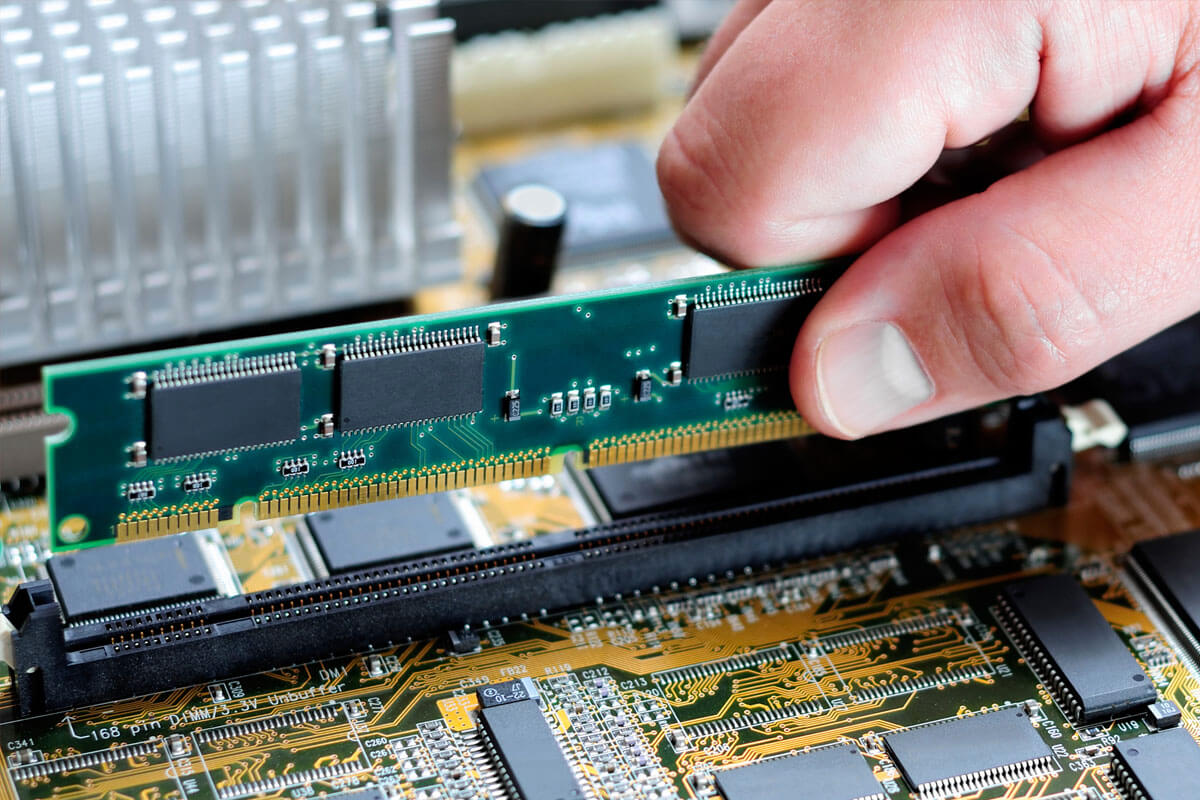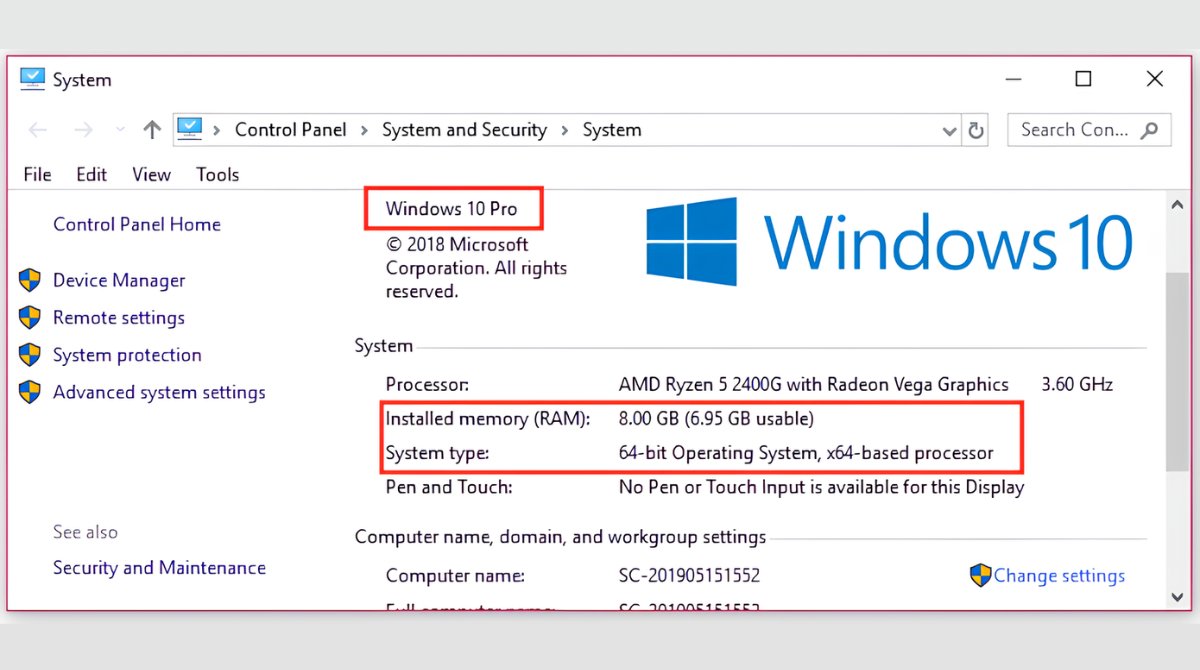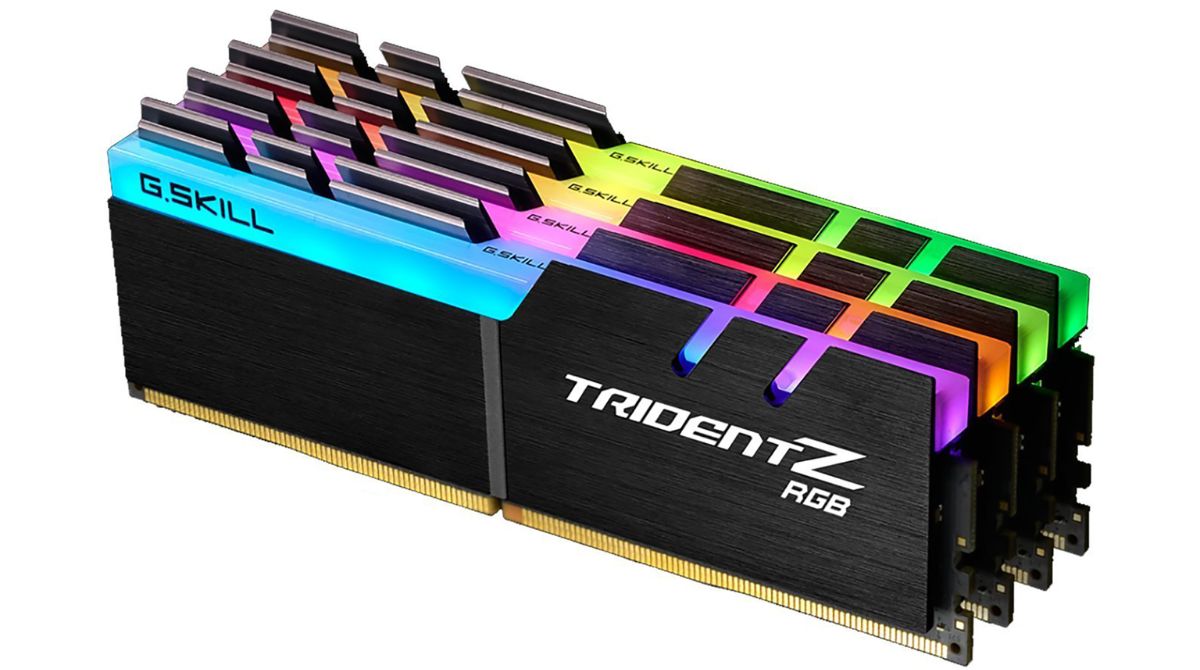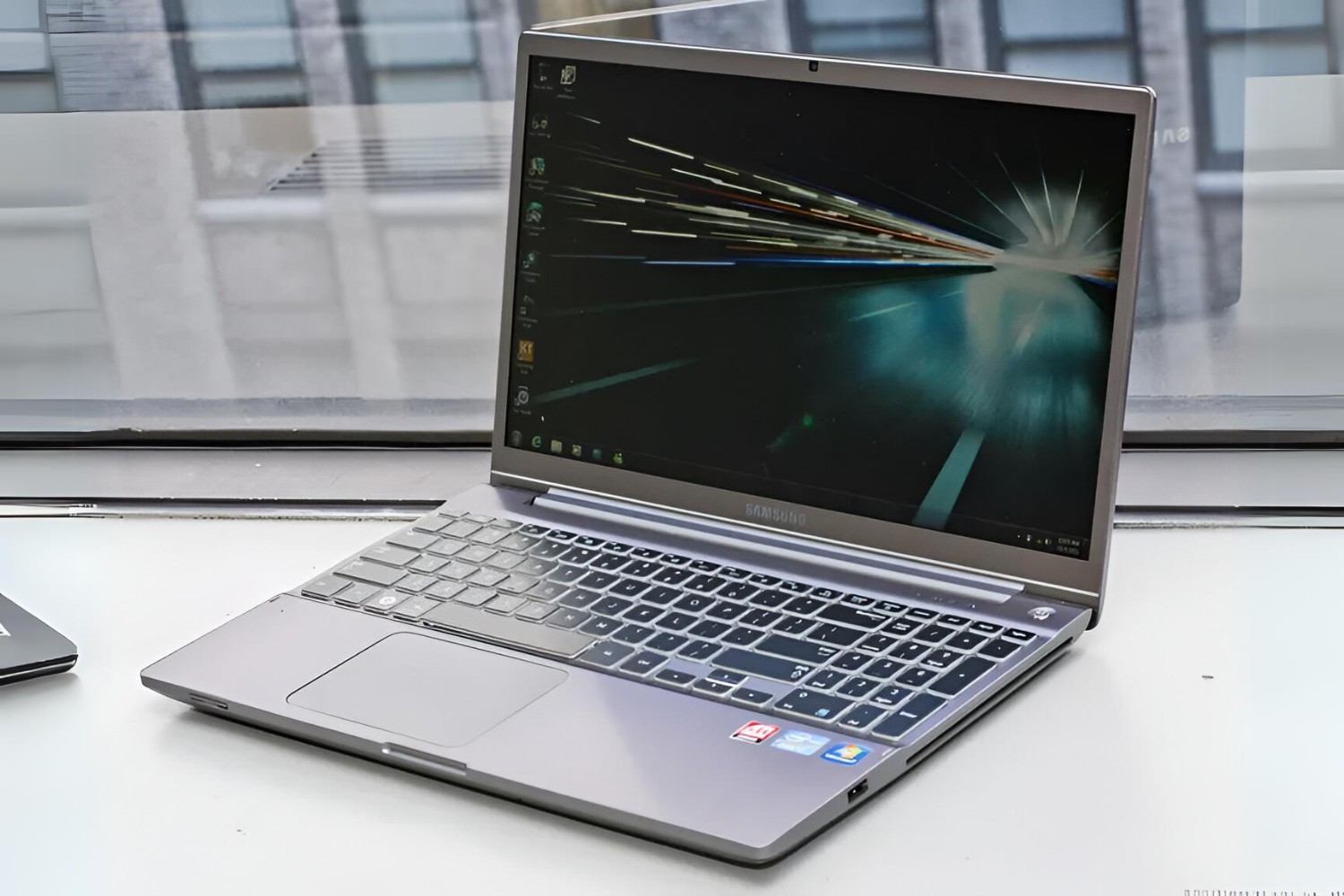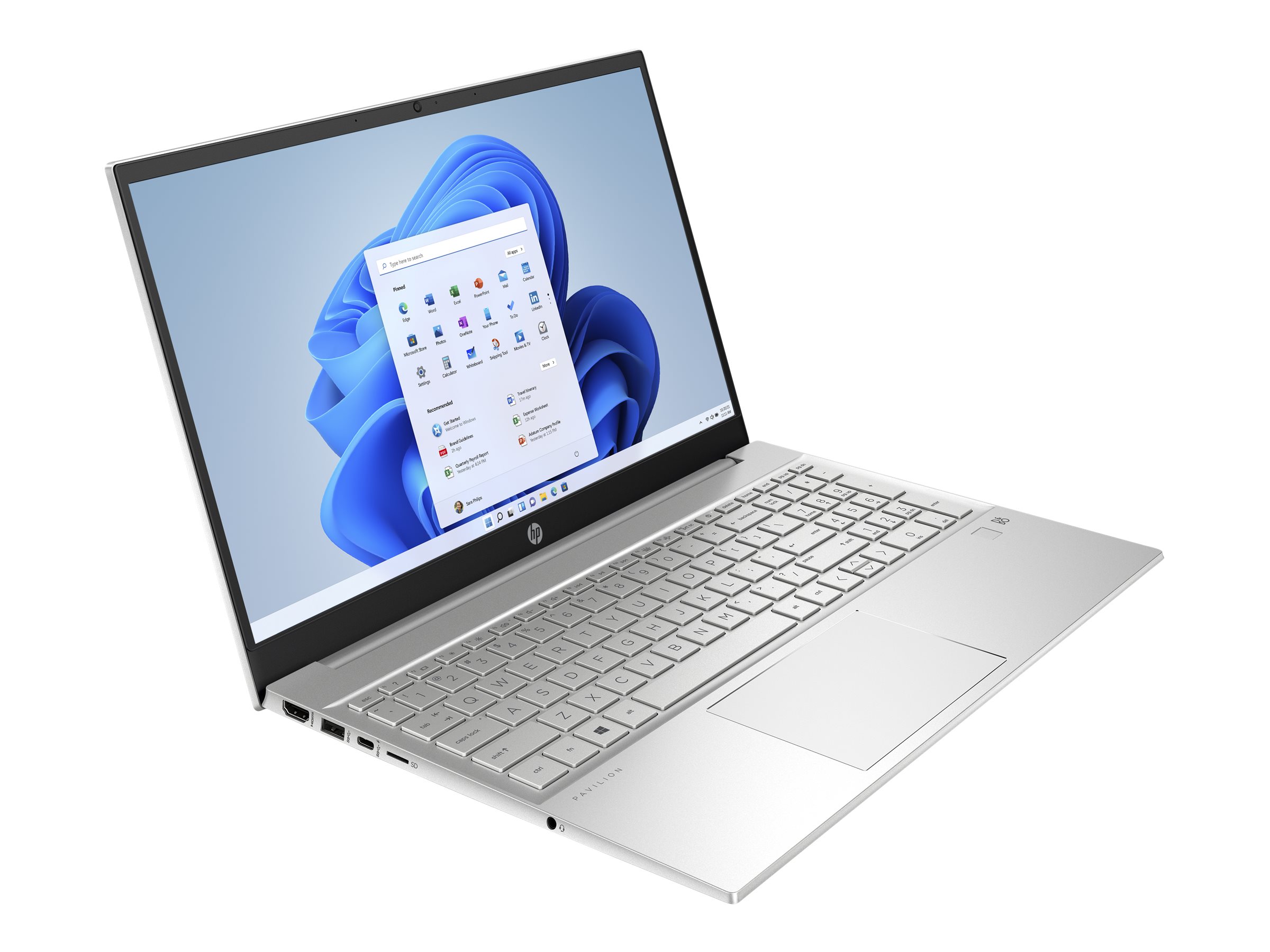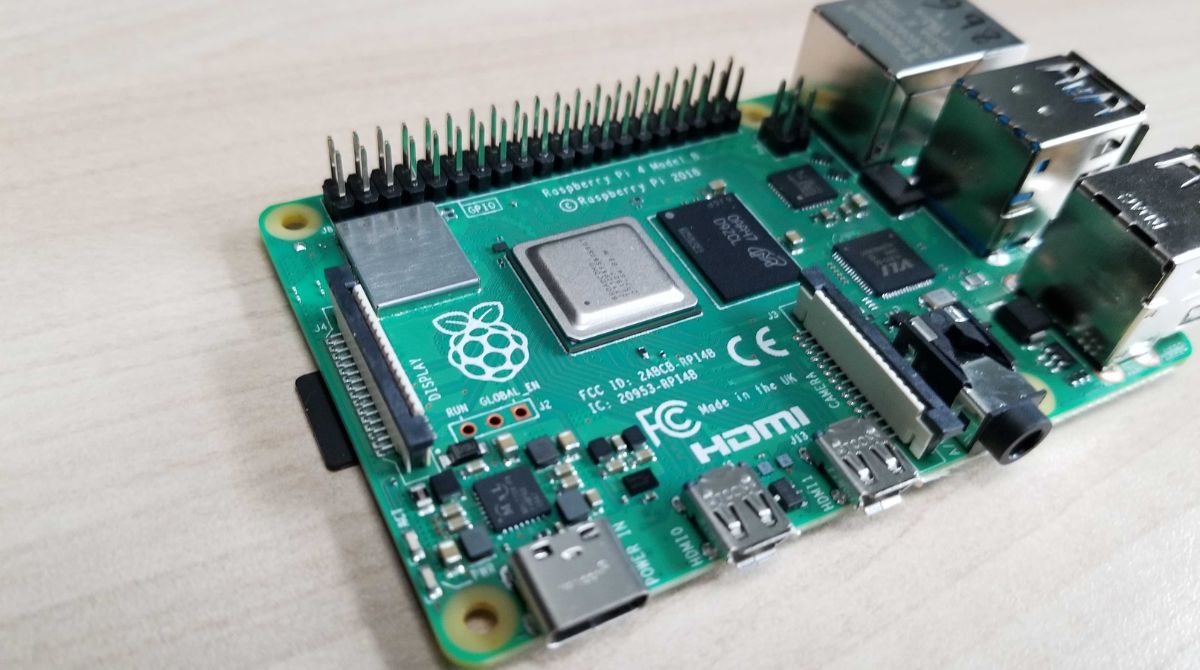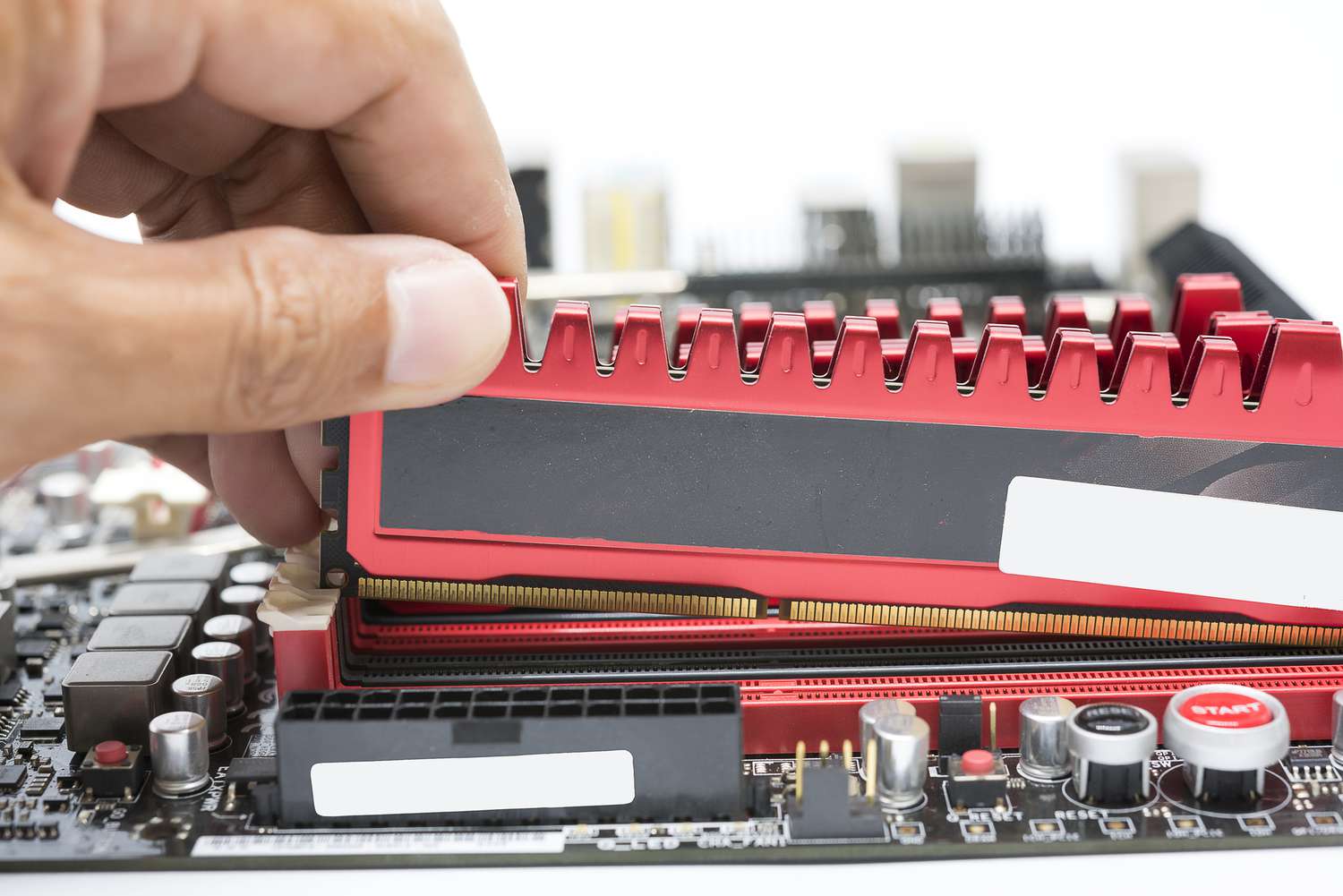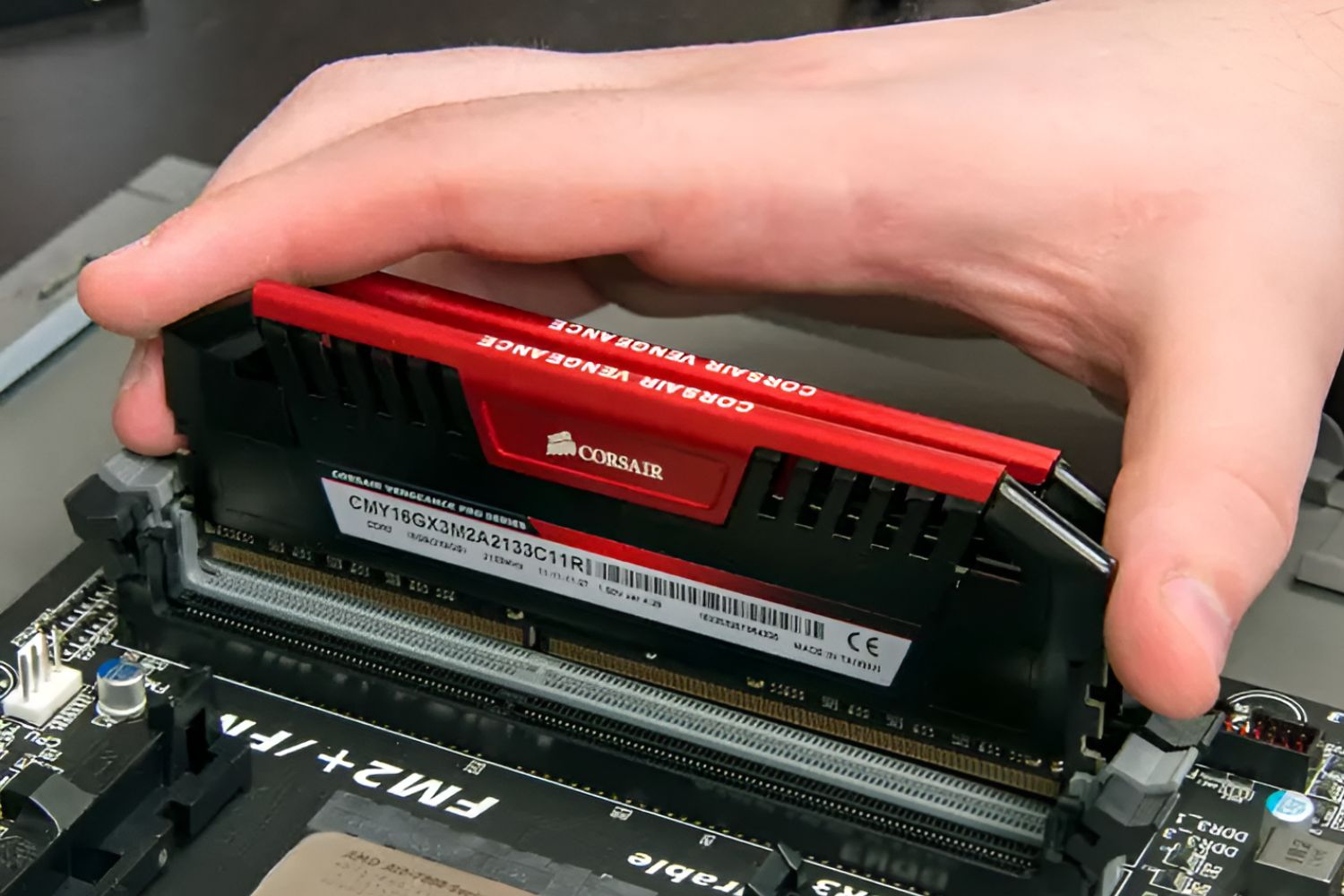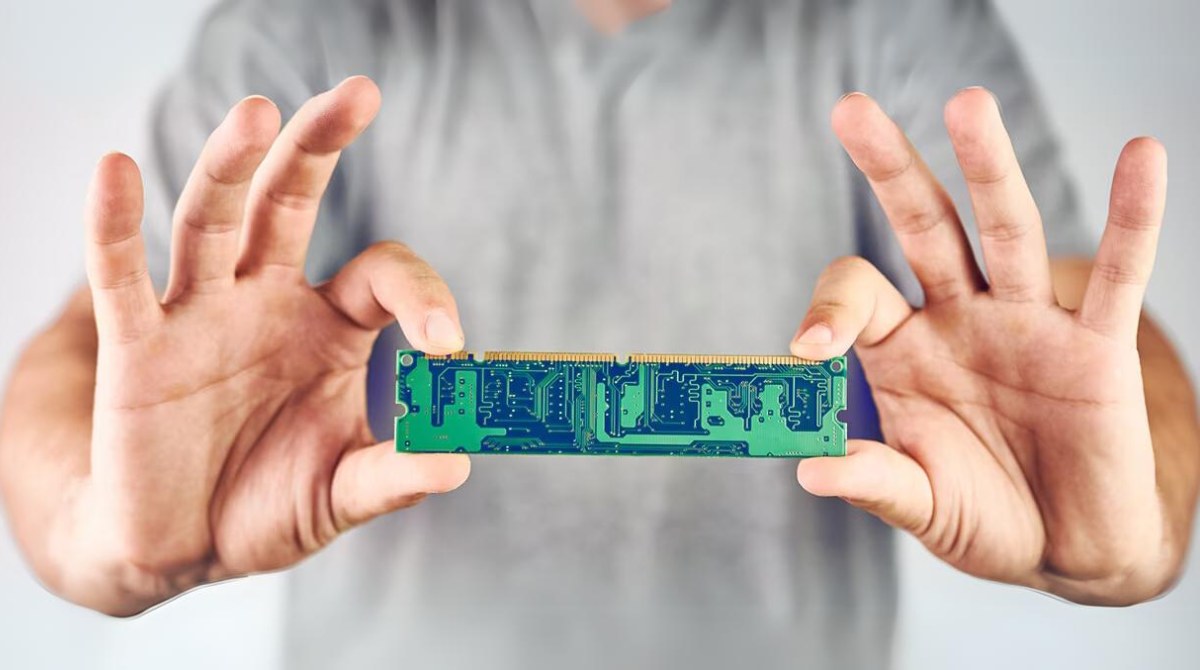Introduction
When it comes to upgrading your computer’s performance, one of the most important components to consider is the RAM (Random Access Memory). RAM plays a crucial role in determining the speed and efficiency of your system, allowing for smooth multitasking and faster data processing. However, with the wide range of options available in the market, choosing the right RAM can be a daunting task.
In this article, we will guide you through the key factors to consider when selecting RAM for your computer. From understanding different DDR types to evaluating speed, capacity, and compatibility, we will provide you with the necessary knowledge to make an informed decision. So, let’s dive in and explore the world of RAM!
Purchasing the right RAM for your computer is crucial for ensuring optimal performance and future-proofing your system. By understanding the various factors that come into play, you can make an educated choice that matches your specific needs. So, without further ado, let’s get started!
DDR Type
When choosing RAM, one of the first considerations is the DDR (Double Data Rate) type. DDR technology has evolved over the years, with each iteration offering improvements in speed and efficiency. The most common DDR types you will come across in the market are DDR3, DDR4, and the more recent DDR5.
DDR3 RAM, introduced in 2007, was the industry standard for many years. It offers decent performance for most computing tasks and is still widely used in budget-friendly systems. However, if you’re looking for more advanced features and higher speeds, upgrading to DDR4 or DDR5 is recommended.
DDR4 RAM, introduced in 2014, brought significant improvements in speed and energy efficiency. It offers faster data transfer rates, lower power consumption, and increased capacity compared to DDR3. DDR4 is now the standard choice for most modern systems, offering better performance for gaming, video editing, and other resource-intensive tasks.
On the horizon is DDR5 RAM, which promises even higher speeds and greater efficiency than its predecessor. While DDR5 modules are not widely available at the time of writing, they offer future-proofing for those who want to invest in cutting-edge technology. However, it’s important to note that DDR5 RAM requires compatible motherboards and CPUs.
Ultimately, the DDR type you choose depends on your specific requirements and budget. DDR3 is suitable for basic computing needs, while DDR4 is recommended for better performance. If you’re a power user or looking to future-proof your system, keep an eye on DDR5 technology and its compatibility with your existing hardware.
Speed
The speed of RAM is measured in megahertz (MHz) and indicates how quickly data can be accessed and transferred. Generally, higher RAM speeds result in better system performance, especially for tasks that involve heavy multitasking, gaming, and video editing.
RAM speeds are labeled with a number, such as 2400MHz or 3200MHz, indicating the maximum data transfer rate. It’s important to note that the RAM speed should be compatible with your motherboard and CPU. If your motherboard only supports lower RAM speeds, purchasing higher-speed RAM will not provide any additional benefits.
When deciding on RAM speed, consider the specific requirements of your computer usage. For casual web browsing, word processing, and basic tasks, RAM speeds of 2400MHz to 3200MHz are generally sufficient. This range provides a good balance between performance and affordability.
On the other hand, if you’re a gamer, content creator, or work with resource-intensive applications, opting for higher RAM speeds can deliver noticeable improvements in performance. RAM speeds of 3200MHz and above are recommended for such purposes, as they allow for faster data processing and smoother multitasking.
Keep in mind that while higher RAM speeds can boost performance, the actual impact may vary depending on other components, such as the CPU and storage. In some cases, the performance gains from increasing RAM speed may be marginal compared to investing in other hardware upgrades.
Lastly, it’s worth mentioning that overclocking is an option for those looking to push their RAM to the limits. Overclocking involves tweaking the settings to run RAM at speeds higher than their default specifications. However, this should be done with caution, as it can void warranties and potentially lead to system instability if not done properly.
Ultimately, choosing the right RAM speed involves finding a balance between your specific needs, compatibility with other components, and budget considerations.
Capacity
The capacity of RAM refers to the amount of memory available for storing data and running applications. It plays a crucial role in determining how efficiently your system can handle multitasking and handle resource-intensive tasks.
When considering the capacity of RAM, it’s essential to assess your specific needs and usage patterns. For basic computing tasks like web browsing, word processing, and email, 8GB of RAM is usually sufficient. This capacity allows for smooth performance and multitasking without any noticeable lag.
However, if you engage in more demanding activities such as gaming, video editing, or running virtual machines, opting for higher capacities is recommended. 16GB of RAM is a popular choice for gaming enthusiasts and creative professionals, as it provides ample memory for running resource-intensive applications and smoothly handling multitasking.
For power users, content creators, and those involved in professional workloads like 3D modeling or video rendering, 32GB or even 64GB of RAM may be necessary. These higher capacities allow for seamless multitasking and provide headroom for handling complex tasks and larger data sets.
It’s important to note that the capacity of RAM should be compatible with your motherboard and operating system. Older systems may have limitations on the maximum amount of RAM they can support, so it’s crucial to check the specifications before upgrading.
While having more RAM can improve performance, it’s essential to strike a balance with your budget. Higher capacity RAM modules are typically more expensive, so assess your needs and allocate your budget accordingly. If you find yourself regularly hitting the limits of your current RAM capacity, upgrading to a higher capacity can provide a significant performance boost.
Lastly, it’s worth mentioning that some motherboards support dual-channel or quad-channel memory configurations. In these cases, installing RAM modules in pairs or sets of four can improve memory bandwidth and further enhance performance. Consult your motherboard’s manual or specifications to determine whether it supports these configurations.
Overall, choosing the right capacity of RAM involves considering your specific usage requirements, compatibility with your system, and your budget constraints.
Number of Modules
When selecting RAM, it’s not only the capacity that matters but also the number of modules you choose to install. The number of RAM modules can have an impact on the overall performance and compatibility of your system.
Most motherboards have multiple RAM slots, allowing you to install multiple RAM modules. The most common options are single module configurations, known as Single-Channel, and dual module configurations, known as Dual-Channel.
In a Single-Channel configuration, you have a single RAM module installed in one of the RAM slots. This setup is suitable for basic computing tasks, but it may not provide the best performance, especially when it comes to memory-intensive tasks.
On the other hand, a Dual-Channel configuration involves installing two identical RAM modules in specific RAM slots that support Dual-Channel mode. This setup allows for better memory bandwidth and improved performance. It’s important to follow the motherboard’s manual or specifications to determine the correct RAM slot configuration for Dual-Channel operation.
Some high-end motherboards also support Quad-Channel memory configurations, which involve installing four RAM modules. Quad-Channel configurations are typically reserved for enthusiast-level systems and offer even greater memory bandwidth and performance.
When it comes to choosing the number of RAM modules, it’s crucial to consider your motherboard’s capabilities. Check the motherboard’s manual or specifications to determine how many RAM modules it can support and whether it supports Dual-Channel or Quad-Channel configurations.
Additionally, if you plan to upgrade your RAM in the future, it’s worth considering how many RAM slots are available on your motherboard. If you fill all the available RAM slots with your current configuration, you won’t have any slots left for future upgrades. Leaving some slots empty provides flexibility for future expansion.
Overall, when it comes to the number of RAM modules, consider your motherboard’s capabilities and your future upgrade plans. Dual-Channel or Quad-Channel configurations can offer improved performance, but make sure your motherboard supports these setups before investing in additional RAM modules.
Voltage
The voltage of RAM modules is an important consideration when it comes to compatibility and power consumption. RAM modules operate at specific voltage levels, and it’s crucial to ensure that they are compatible with your motherboard and other system components.
The two most common voltages for RAM modules are 1.5V and 1.35V. However, it’s important to note that newer generations of RAM, such as DDR4, typically operate at lower voltages like 1.2V. Before purchasing RAM, check your motherboard’s specifications to determine the supported voltage range.
If your motherboard supports multiple voltage options, it’s generally recommended to choose RAM modules that operate at the lowest voltage supported by your system. Lower voltage RAM modules consume less power, run cooler, and help in conserving energy. They also tend to be more reliable and have a longer lifespan.
On the other hand, if you accidentally install RAM modules with a higher voltage than what your motherboard supports, it can lead to compatibility issues and potentially damage your components. Always verify the voltage requirements of your motherboard and choose RAM modules accordingly.
It’s worth mentioning that some high-performance RAM modules come with an XMP (eXtreme Memory Profile) option. XMP allows you to run the RAM at higher speeds and adjust other settings by enabling a predefined profile in the motherboard’s BIOS. However, enabling XMP may require increasing the RAM voltage slightly, so make sure your motherboard supports XMP and that you are comfortable with any potential increases in voltage.
Lastly, it’s important to ensure that the RAM modules are properly inserted into their slots to ensure a secure connection and prevent any voltage-related issues. Follow the motherboard’s manual or specifications for correct installation procedures.
Overall, when it comes to voltage, choose RAM modules that are compatible with your motherboard and preferably operate at the lowest voltage supported by your system. This will ensure optimal compatibility, energy efficiency, and reliability.
Compatibility
Ensuring compatibility between your chosen RAM and other components in your system is crucial for a seamless and efficient operation. Before purchasing RAM, it’s important to consider compatibility factors such as the form factor, motherboard support, and operating system requirements.
One of the primary compatibility considerations is the form factor of the RAM modules. The most common form factors for desktop computers are DIMM (Dual In-Line Memory Module) and SO-DIMM (Small Outline Dual In-Line Memory Module), with DIMM being the standard for most desktop systems and SO-DIMM used in laptops and smaller form factor PCs. Ensure that you choose the correct form factor that is supported by your motherboard and fits into the corresponding RAM slots.
Next, consider the compatibility of the RAM with your motherboard. Check your motherboard’s specifications to determine the supported RAM types (e.g., DDR3, DDR4, DDR5) and capacities. It’s also important to note whether your motherboard supports single-channel, dual-channel, or quad-channel memory configurations. Installing RAM that is not compatible with your motherboard can result in system instability or failure to boot.
Additionally, consider the operating system requirements. Most modern operating systems can support a wide range of RAM capacities, but it’s important to double-check the specifications to ensure compatibility. For example, a 32-bit operating system will have limitations on how much RAM it can utilize, so upgrading to more than the supported capacity would not provide any benefits.
Another aspect of compatibility is the clock speed of the RAM. Ensure that the speed of the RAM modules is compatible with your motherboard. If your motherboard supports a certain maximum RAM speed, using RAM with a higher speed may be limited to the maximum speed supported by your motherboard, potentially resulting in underutilization of the RAM’s capabilities.
Finally, it’s worth mentioning that if you are adding new RAM to an existing system, try to match the specifications of the existing RAM as closely as possible. Mismatched RAM modules, such as different capacities or speeds, can result in compatibility issues and impact overall performance.
Ultimately, ensuring compatibility between your chosen RAM and your motherboard, form factor, and operating system is crucial for proper system functionality. Double-check the specifications and compatibility requirements to make an informed decision and avoid any potential compatibility issues.
Brand and Quality
When it comes to choosing RAM, considering the brand and quality is essential for ensuring a reliable and high-performing system. The brand reputation, warranty, and quality of components can have a significant impact on the stability and longevity of your RAM.
Opting for reputable and well-established RAM brands is generally recommended. These brands have a proven track record of manufacturing quality RAM modules that undergo rigorous testing and quality control processes. Some well-known RAM brands include Corsair, Kingston, Crucial, G.Skill, and Team Group, among others.
Choosing a reputable brand not only ensures a higher quality product but also provides you with better customer support and warranty coverage. In the event of any issues or defects, reputable brands typically offer reliable warranties and responsive customer service to address the problem and provide a resolution.
Additionally, consider the specific RAM model or series offered by the brand. Higher-end RAM modules often come with additional features such as heat spreaders or advanced cooling solutions that help dissipate heat and improve overall performance. These features are especially beneficial for gaming enthusiasts, overclockers, and those running memory-intensive tasks.
Reading reviews and seeking recommendations from trusted sources or online communities can provide valuable insights into the brand’s reliability, performance, and customer satisfaction. User reviews and professional benchmarks can help you gauge the overall quality and performance of the RAM modules you’re considering.
It’s worth mentioning that the price of RAM modules can vary based on brand and quality. While it’s tempting to opt for the cheapest option, consider your specific needs and budget. Investing in reputable brands and higher-quality RAM modules can provide better reliability, performance, and longevity, making it a worthwhile investment in the long run.
Lastly, compatibility with your existing system components is crucial. Ensure that the RAM modules you choose are compatible with your motherboard, considering factors such as form factor, voltage, and speed. Check the motherboard’s specifications and recommended RAM modules from the manufacturer to ensure a seamless and compatible setup.
Overall, selecting RAM modules from reputable brands known for their quality and reliability ensures the stability, performance, and longevity of your system. Conduct thorough research, read user reviews, and consider the specific requirements of your system to make an informed decision.
Cost
Cost is an important consideration when choosing RAM for your computer. RAM prices can vary depending on factors such as capacity, speed, brand reputation, and additional features. It’s essential to find a balance between your budget and the performance needs of your system.
Firstly, determine your specific requirements and usage patterns. If you primarily use your computer for basic tasks like web browsing, word processing, and email, you may not need high-capacity and high-speed RAM modules. In such cases, opting for more affordable options with lower capacities and speeds can be a cost-effective choice.
On the other hand, if you’re a gamer, content creator, or require your computer for heavy multitasking and resource-intensive tasks, investing in higher-performance RAM may be necessary. These high-end RAM modules often come with a higher price tag due to their increased capacity, faster speeds, and additional features like heat spreaders or RGB lighting.
It’s also worth considering the brand reputation and warranty coverage when assessing the cost of RAM. Reputable brands may come at a slightly higher price, but they offer better quality control, customer support, and longer warranty periods. This can provide peace of mind and added value in case any issues arise with the RAM modules.
Another cost consideration is the future upgradability of your RAM. If you anticipate the need for more RAM in the future, it may be more cost-effective to invest in slightly higher-capacity RAM modules upfront. This allows you to fill up the available RAM slots and leave room for future upgrades without the need to replace all the existing modules.
Lastly, keep an eye out for discounts, promotions, or sales events that may offer RAM modules at more affordable prices. Comparing prices across different retailers or online platforms can also help find better deals and savings.
Remember, while cost is an important factor, it shouldn’t be the sole deciding factor. Consider the specific needs of your system, the performance requirements, and the reputation and reliability of the RAM modules. By striking the right balance between cost and performance, you can make a wise investment in RAM that enhances your computer’s performance without breaking the bank.
Conclusion
Choosing the right RAM for your computer is crucial for optimizing its performance and ensuring a smooth user experience. By considering factors such as DDR type, speed, capacity, number of modules, voltage, compatibility, brand, and cost, you can make an informed decision that meets your specific needs and budget requirements.
DDR type plays a significant role in determining the performance and compatibility of your RAM. DDR4 is the standard choice for most systems today, but keep an eye on the emerging DDR5 technology. RAM speed impacts the data processing capability of your system, and selecting the appropriate speed based on your usage requirements is important.
The capacity of RAM determines how efficiently your system can handle multitasking and resource-intensive tasks. Consider your specific needs and opt for higher capacities if you engage in activities like gaming, video editing, or running virtual machines. The number of RAM modules and their configuration (single-channel, dual-channel, or quad-channel) can further enhance memory bandwidth.
Ensuring compatibility between RAM and your motherboard, form factor, voltage requirements, and operating system is essential for proper functionality. It’s also recommended to choose RAM modules from reputable brands known for their reliability, quality, and customer support.
Cost is a factor to consider, but it should be balanced with your performance requirements and future upgradability plans. Opt for RAM modules that offer the right balance of performance, reliability, and value for your specific needs and budget.
In conclusion, by considering these factors and making an informed decision, you can select the right RAM for your computer, enhancing its speed, multitasking capabilities, and overall performance. So, take your time, research thoroughly, and invest in RAM that will take your computing experience to the next level.







